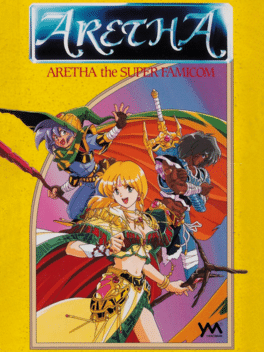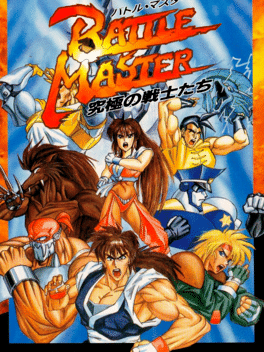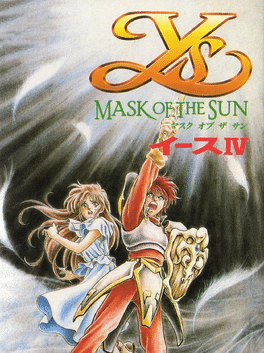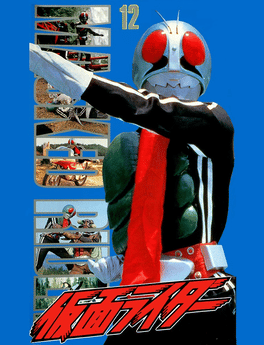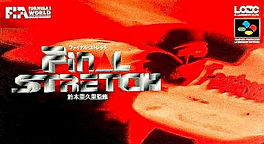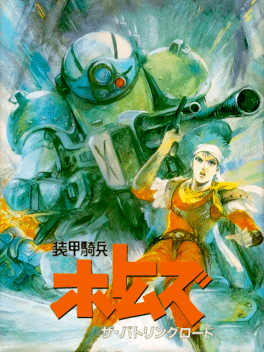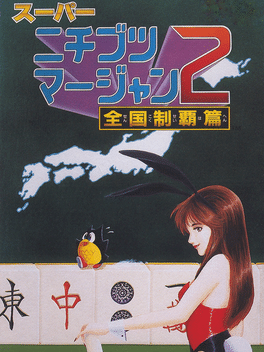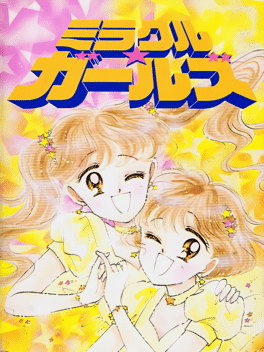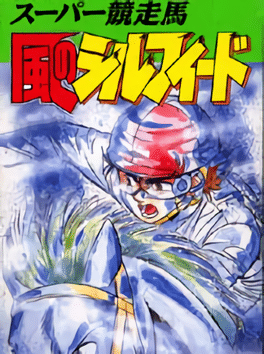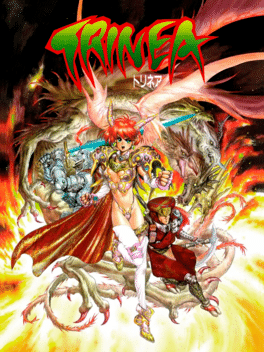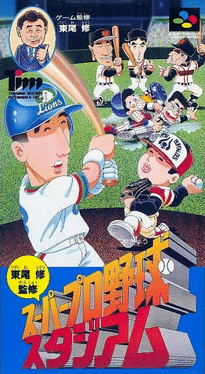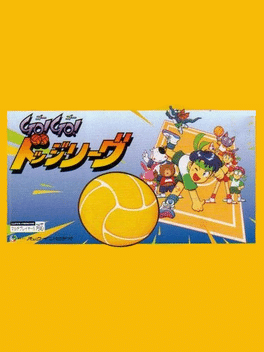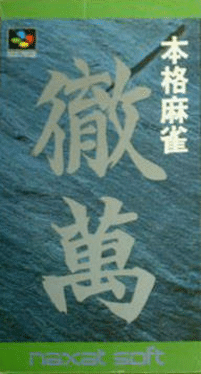Newest Super Famicom Games - Page 33
-
Dynamic Stadium
1993
Dynamic Stadium
1993
Dynamic Stadium is a baseball game from Eleca/Electronics Application released exclusively for the Super Famicom. While adopting the same behind-the-batter perspective as Namco's Famista series, Dynamic Stadium presents its athletes as comic book heroes rather than chibi figures, making them absurdly buff and frequently featuring action shots of them catching fly-balls and narrowly making it to base before being caught out. "Safe!" and "Out!" calls are presented as spiky word balloons. Dynamic Stadium does not feature an official NPB license, so all the team names are fictitious. The game was published in Japan by Sammy Corporation and was never localized for overseas territories. -
Accele Brid
1993
Accele Brid
1993
Players progress through the game as a robot racing through a pipe, shooting everything that moves. The robot can shoot from both arms, jump, kick and punch. There are also power-ups and bonuses that can be collected to upgrade the robot's weapons and armor. There are three different types of robots to choose from: Silver Mare, Beliws, and Nitika. Weapons are chosen before each stage and every level has Mode 7 graphics. Three difficulty levels can be chosen; ranging from easy, medium, and hard. -
Aretha
1993
Aretha
1993
The game is a console-style RPG, where Ariel and her party travel on the world map, through forests, mountain paths, and caves, occasionally visiting towns and fighting monsters in turn-based combat viewed from first-person perspective, using a variety of physical and special attacks. -
Battle Master: Kyuukyoku no Senshi-tachi
1993
Battle Master: Kyuukyoku no Senshi-tachi ("Battle Master: Ultimate Warrior") is a sci-fi themed one-on-one fighter game exclusively for the Super Famicom. It was developed by System Vision, which previously worked on the SNES fighter Deadly Moves. The player can select between seven characters and play through a single-player mode with each, meeting different opponents and fighting a boss character at the end. There's also a Versus mode that allows two human players to compete with fighters of their choice. -
U-jin: Janjuu Gakuen
1993
U-jin: Janjuu Gakuen
1993
An anime-themed Mahjong game from Varie for the Super Famicom. Features artwork from prominent manga artist U-Jin. Yuujin: Janjyu Gakuen ("U-Jin: Sparrow Veterinary School", roughly) is a mahjong game published by Varie. The player can assume the role of any of three heroines, or create their own, as they take on opponents throughout their eponymous school. The game includes a collaboration with manga artist U-Jin (birth name: Ube Yamaguchi), who helped create the various anime characters and is featured in the game's title. Like many mahjong games, Yuujin: Janjyu Gakuen was never released outside of Japan. It was followed with a sequel: Yuujin: Jankyu Gakuen 2. -
Ys IV: Mask of the Sun
1993
After having defeated the ultimate evil in his previous adventure, the great hero Adol stands on a sea shore, thinking about the fate of the once peaceful Utopian land of Ys, while the wind is blowing through his red hair. Suddenly, Adol notices a bottle, thrown onto the shore. It contains a letter, written in a foreign language, in which an unknown person asks Adol to come to his land and save it from a mysterious evil. Adol decides to accept the offer, and thus his adventure begins again... Ys IV: Mask of the Sun is an action RPG with a combat system like the earlier Ys games. An enemy should be rammed from the sides in order to hurt him. If performed incorrectly, the player will get hurt himself. It's also possible to use magic and position oneself strategically in battle so that the enemy won't be able to inflict any damage. -
Kamen Rider
1993
Kamen Rider
1993
Kamen Rider is a beat 'em up developed by Sun L and published by Bandai for the Super Famicom platform. It is based on the Kamen Rider tokusatsu TV show, specifically the very first incarnation which ran between 1971-1973. The player assumes the role of Takeshi Hongo, the first Kamen Rider, as he fights through the minions and kaijin (human-sized kaiju) of the evil organization Shocker in a series of brawler stages not unlike Final Fight or Double Dragon. The game can also be played co-operatively with a second player who plays as Hayato Ichimoto: the second Kamen Rider. At any time the two players can transform into their Kamen Rider personas, necessary for delivering the final blows on bosses. Kamen Rider was only released on the Super Famicom in Japan. -
Final Stretch
1993
Final Stretch
1993
Final Stretch is a Formula One racing game developed by Genki. It is the spiritual sequel to their earlier game Aguri Suzuki F-1 Super Driving (rebranded in the US as Redline: F1 Racer), and like that game Final Stretch is licensed by FOCA and supervised by Japanese F1 racer Aguri Suzuki. The game employs a Mode 7-enabled viewpoint close to the ground that has multiple vantage points that the player can switch between and, with the FOCA license, uses many of the then-current F1 teams and racers. Unlike Redline: F1 Racer, Final Stretch was never released outside of Japan. -
Super Uno
1993
Super Uno
1993
Super Uno is the video game adaptation of the card game of the same name. Released only in Japan. -
Shogi Fuurinkazan
1993
Shogi Fuurinkazan
1993
Shogi Furinkazan is a Miscellaneous game, published by Pony Canyon, which was released in Japan in 1993. -
Soukou Kihei Votoms: The Battling Road
1993
The Japanese animation "Armored Trooper Votoms", released in 1983, was the brainchild of N.Shioyama (Ronin Warriors) and R. Takahashi (Gasaraki). Together they created one of the most beloved (in Japan) shows in the history of Japanese Animation. The series was later released (1996) in the US by Central Park Media. The series spanned 19 videocassettes, and quickly developed a small, but devoted fan following. Its 80's style animation turned off a lot of would-be fans, but those willing to endure the animation were rewarded with one of the best storylines (and also some really cool mecha designs) available in the genre. The series was so popular in Japan that games, toys, and models are to this day being made. Armored Trooper Votoms: The Battling Road is, the first Votoms game created, and is an incredible game. Utilizing the DSP chip (A chip implemented into no more than 15 Super Nintendo/Famicom cartridges) to create a Pseudo-3D environment, this game looks absolutely wonderful for its time. Since its release ther -
Hatayama Hacchi no Pro Yakyuu News! Jitsumei-ban
1993
Hatayama Hacchi no Pro Yakyuu News! Jitsumei-ban is a Sports game, developed by Agenda and published by Epoch, which was released in Japan in 1993. -
Super Nichibutsu Mahjong 2: Zenkoku Seiha-hen
1993
Super Nichibutsu Mahjong 2: Zenkoku Seiha-hen is a Miscellaneous game, developed and published by Nichibutsu, which was released in Japan in 1993. -
Miracle Girls
1993
Miracle Girls
1993
Mikage and Tomomi Matsunaga are not exactly your ordinary junior high school students. The two girls have a well kept secret - they are the 'Miracle Girls', and they both share extraordinary powers allowing them to communicate telepathically or to vanish into thin air and teleport themselves at will. The game begins in a school campus, just as the girls and four of their friends are about to start their lunch break. Suddenly, a glowing ball of light appears and teleport them into a distant and strange world. Furthermore, her friends have now mysteriously disappeared and the two girls embark on a long journey to find out who is behind all these strange events... The player can either play as Mikage or her twin sister Tomomi, and they both come equipped with the most unusual weapon - candies. -
Ranma ½: Aka Neko-dan Teki Hihou
1993
While coming home late one night, the Jusenkyo Guide accidentally wanders into the Gods and Demons Graveyard, and proceeds to knock over the tomb of the dreaded Nekomaou, the Ghost Cat King. The evil spirit, returned from the grave, gathers to him the titular Red Cat Gang and sets out to gather three treasures, the Peach Gem, Sakura Sword and Forest Mirror, in order to recreate the magical Star Crystal and attain his wish of world domination. Ranma Saotome and several of his friends set out to stop this evil from occurring. -
Super Kyousouba: Kaze no Silpheed
1993
Super Kyousouba: Kaze no Silpheed is a Sports game, published by King Records, which was released in Japan in 1993. -
Trinea
1993
Trinea
1993
Trinea is a Super Famicom role-playing video game that was released in 1993 exclusively in Japan. Players get to select from three different characters; who have different attack, speed, and hit point levels. Elements in this game involving fighting demons, magical rituals around pentagrams, and slaying dragons. -
Higashio Osamu Kanshuu Super Pro Yakyuu Stadium
1993
Higashio Osamu Kanshuu Super Pro Yakyuu Stadium is a Sports game, developed by C-Lab and published by Tokuma Shoten, which was released in Japan in 1993. -
Go! Go! Dodge League
1993
Go! Go! Dodge League
1993
Go! Go! Dodge League is a dodgeball game for the Super Famicom put out by obscure Japanese developer Mebio Software and published by Pack-In-Video. The player can choose between several different teams, all with their own distinctive look, stage and special dodgeball attacks. There are exhibition and tournament modes, including an elimination challenge. The game can also support up to four players with a MultiTap peripheral, with many different variations for teams (2 Humans vs 2 Humans, 3 Humans vs CPU, 3 Humans vs 1 Human, 4 Humans vs CPU, etc.). -
Honkaku Mahjong: Tetsuman
1993
Honkaku Mahjong: Tetsuman is a Miscellaneous game, developed by Syscom and published by Naxat Soft, which was released in Japan in 1993.


